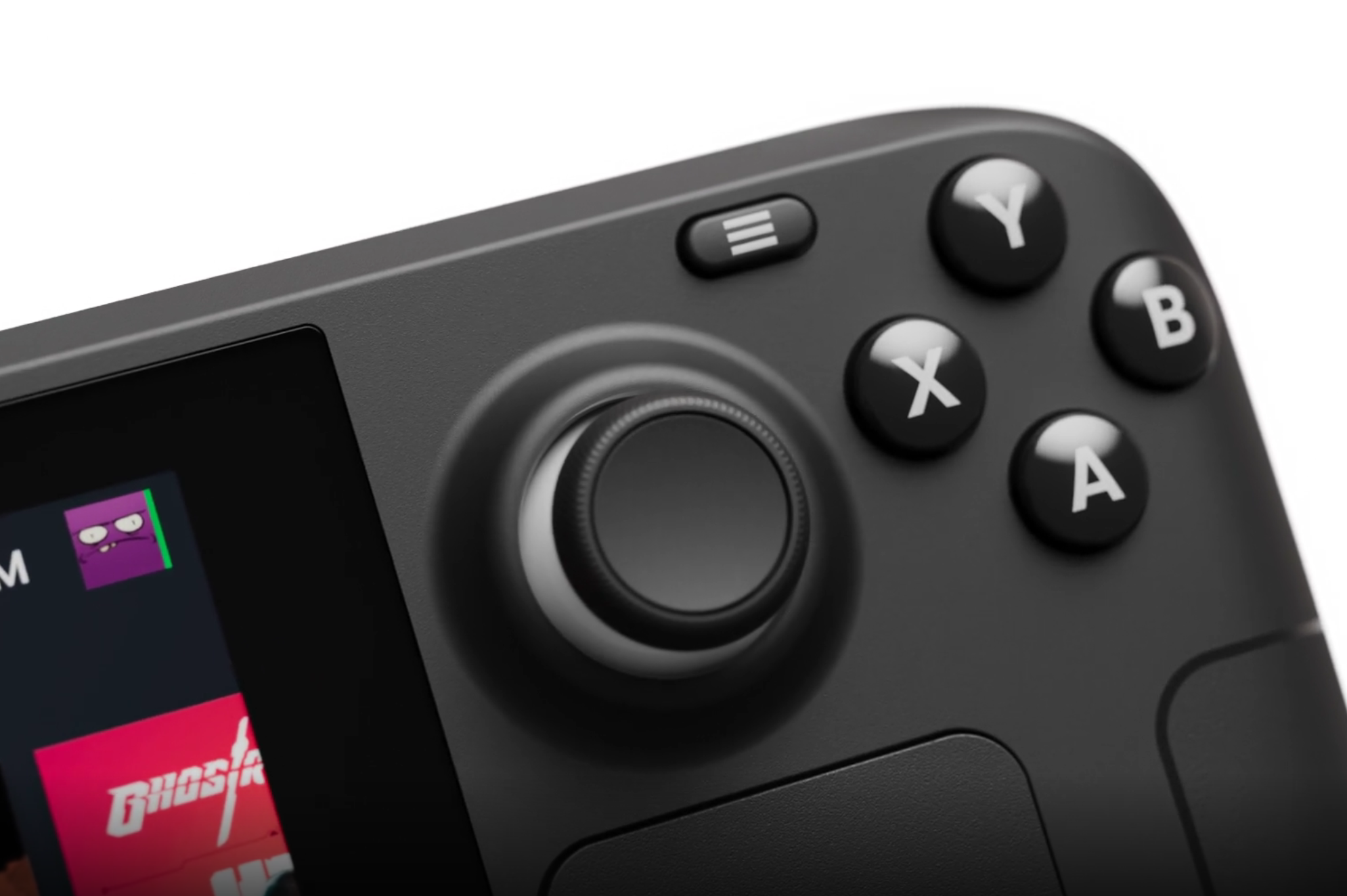Steam Deck vs Nintendo Switch: How do they compare?
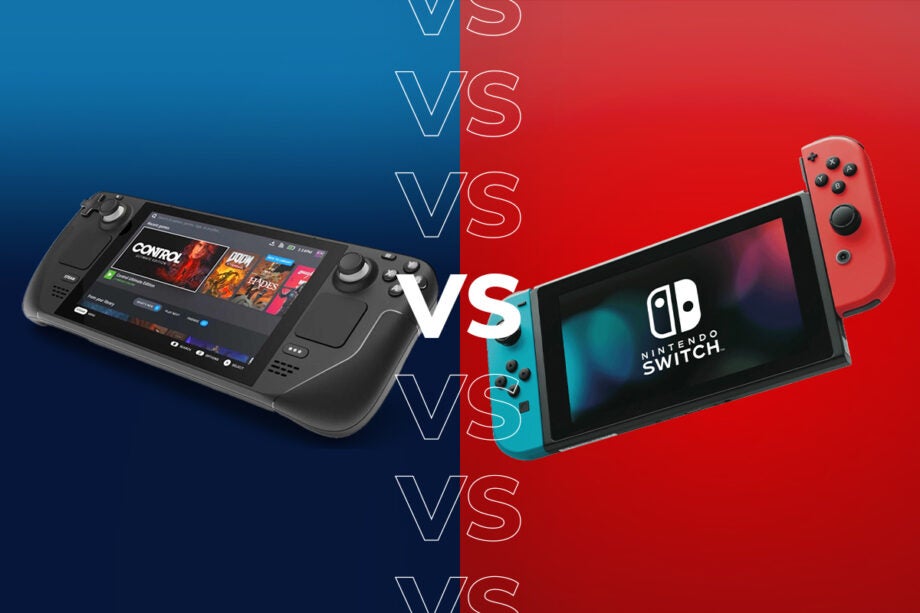
The Steam Deck has finally launched, making it possible for PC gamers to play their collection of Steam games on the go. But is it as good as the current champion of gaming portables, the Nintendo Switch?
If you’re stuck between which portable to buy, then you’re in the right place. We’ve reviewed both devices, and are finally ready to offer a full breakdown of how they compare based on our lab testing and real-world experience. Both the Switch and the Steam Deck have very different strengths and weaknesses, so we’ll be highlighting them all here so you know which is the best option for you.
So without further ado, here’s our Steam Deck vs Nintendo Switch face-off.
Pricing
The Nintendo Switch currently has three models on offer: the £199/$199.99 Switch Lite which is limited to portable play, the £230/$299 standard Switch and the £309/$349 Switch OLED which features an enhanced screen, increased storage and a sturdier built-in stand.
The Steam Deck also comes in three flavours, but is separated by storage configurations: £349/$399 for 64GB, £459/$529 for 256GB and £569/$649 for 512GB. You also get speedier SSDs by opting for the pricier models, while the most expensive option also features an anti-glare etched glass.
As you can see, the Steam Deck is considerably more expensive than the Switch, but that’s no surprise since it’s packing more powerful components while also being more versatile beyond gaming thanks to its Linux operating system.
Design and controllers
If you just looked at images online of the Nintendo Switch and Steam Deck, you may think they have very similar designs. After all, both portables have a screen sandwiched by a plastic chassis, while also featuring ports for the likes of USB-C and headphones.
However, the Steam Deck is significantly larger and heavier than the Nintendo Switch OLED. The Steam Deck hits the scales at 669g, while the Switch OLED weighs 422 grams. That said, we never really found an issue with the Steam Deck’s weight, as we could hold it for multiple hours without any discomfort.
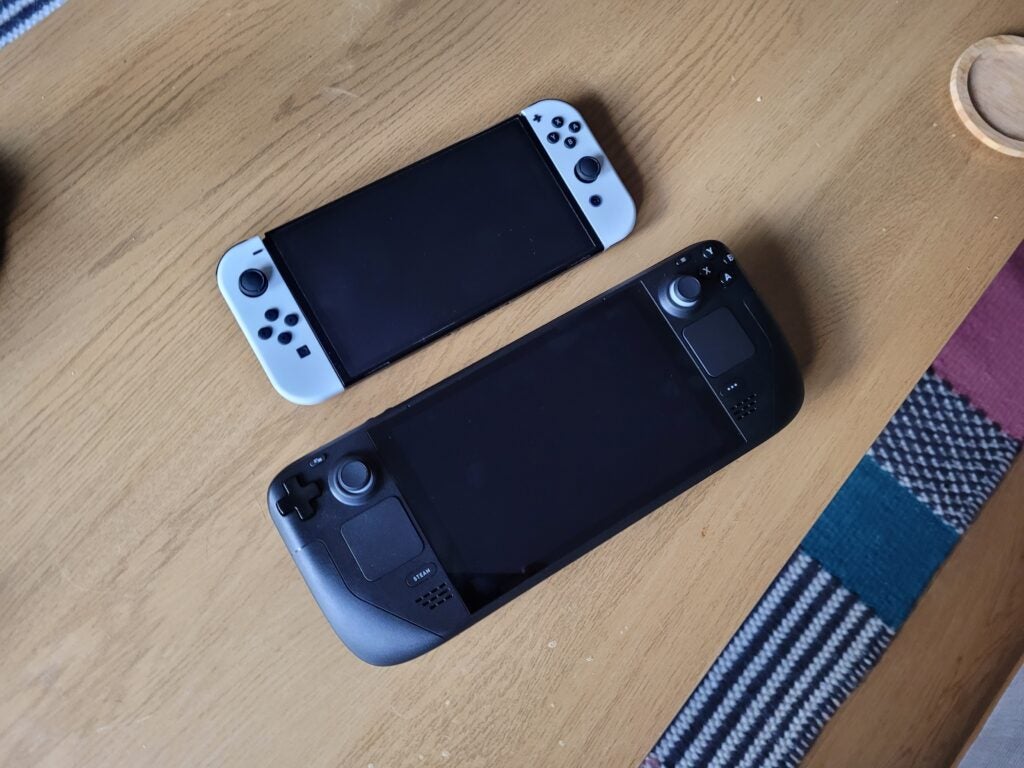
The biggest issue is the size of the portable, with the 49mm thick frame feeling incredibly chunky compared to the 14mm Switch OLED. This not only means it can be a little uncomfortable wrapping your fingers around to press the various buttons, but it also makes it more difficult to slip into a compact bag.
The Switch boasts another advantage in that its Joy-Con controllers are detachable, providing the portable games console with more flexibility for table-top or TV mode. The Steam Deck’s controllers are fused to the portable, so there’s no way of detaching them from the screen. And while you can connect external controllers via Bluetooth, the Steam Deck lacks a stand to prop it up. The Switch wins comfortably in terms of versatility.
But how about the actual controls? Both portables have dual analogue sticks, a D-pad and 4 front-facing buttons, but the Steam Deck arguably offers deeper clicks for a more comfortable experience. And while it’s still early days for the Steam Deck, we’re hoping it won’t suffer from the same ‘Joy-Con drift’ issue that plagues the Switch.
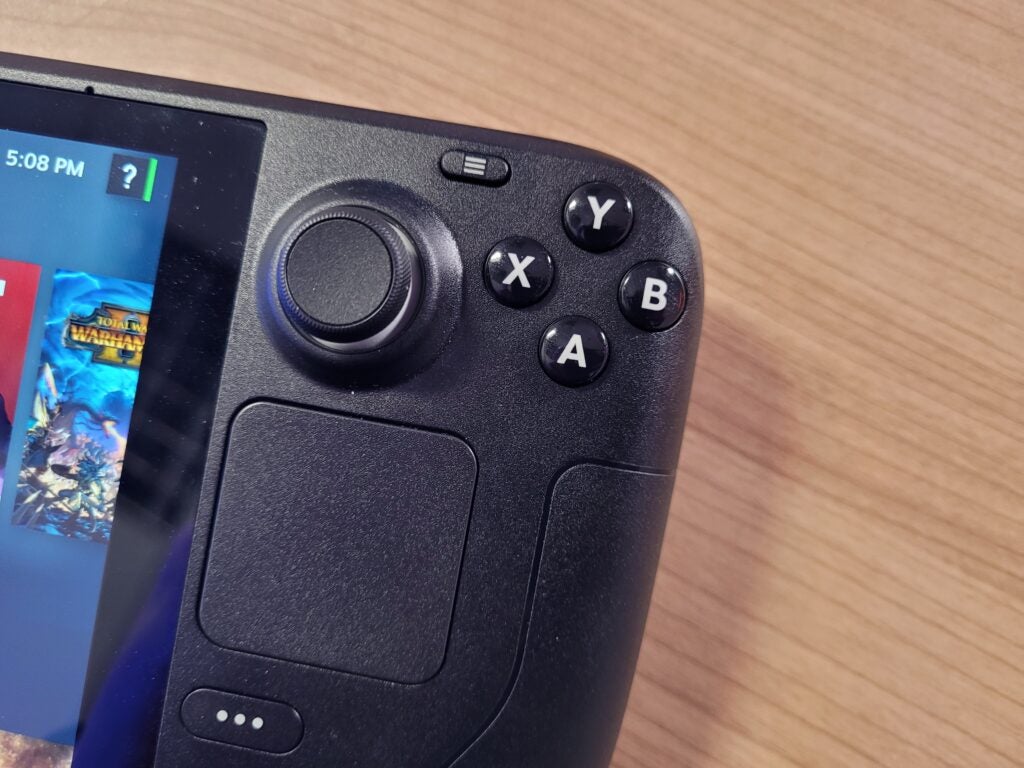
The Steam Deck also features two trackpads, allowing you to control a mouse cursor when needed, as well as grip buttons on the rear which are very useful for custom input mapping.
In this Steam Deck vs Nintendo Switch rivalry, the former offers greater flexibility when it comes to controls, although the Switch’s lighter and thinner design make it more portable for on-the-go gaming and generally more comfortable to hold for prolonged periods, based on my experience using the two.
Screen
The Steam Deck features a 7-inch LCD screen with a 1280×800 resolution. That’s not too dissimilar to the standard Nintendo Switch, which has a 6.2-inch LCD panel with a 1280×720 display.
However, there’s a clear winner in this contest, as the Nintendo Switch OLED features the titular OLED technology which makes colours appear significantly more vibrant. We were really impressed with the OLED panel on the Switch, as it truly is remarkable to see how much of a difference it makes.
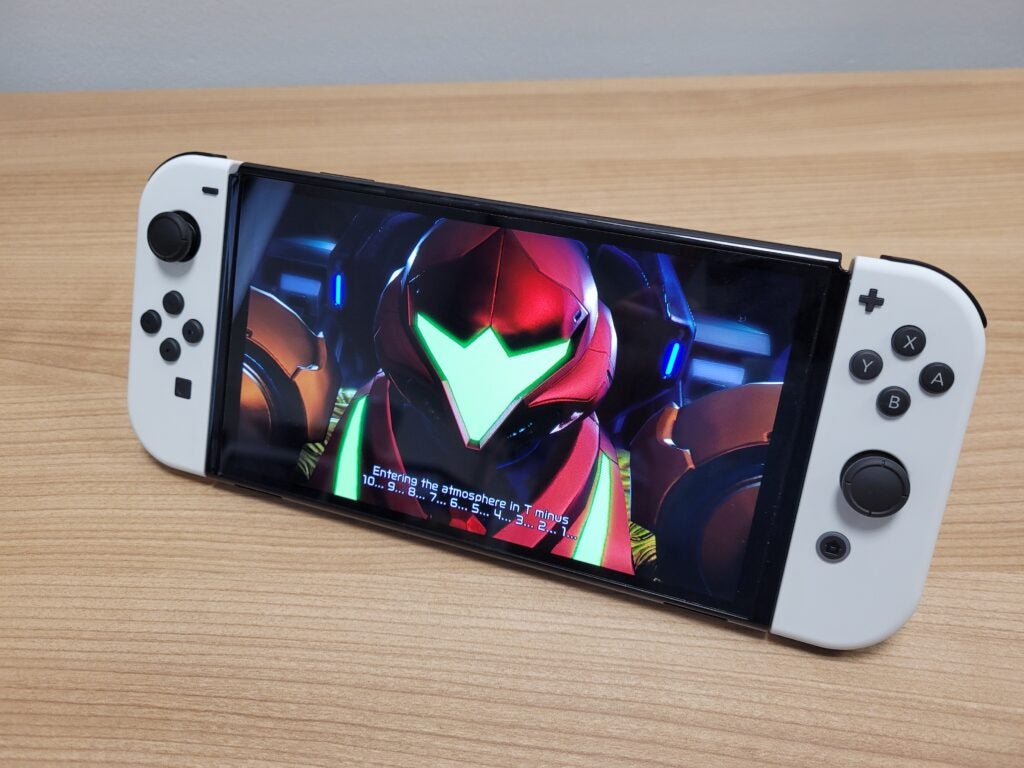
The Nintendo Switch OLED also has the same 7-inch size as the Steam Deck, and while the resolution is still capped at 1280×720, images still look sharp on the portable’s built-in screen.
Both the Switch and Steam Deck flaunt a touchscreen too, allowing you to adjust settings by simply prodding the screen. You can also output the system’s picture to an external display via the USB-C connection too, although it’s easier to do so on the Switch thanks to its bundled dock. As you can see in the picture below, the connection process is less elegant on the Steam Deck.
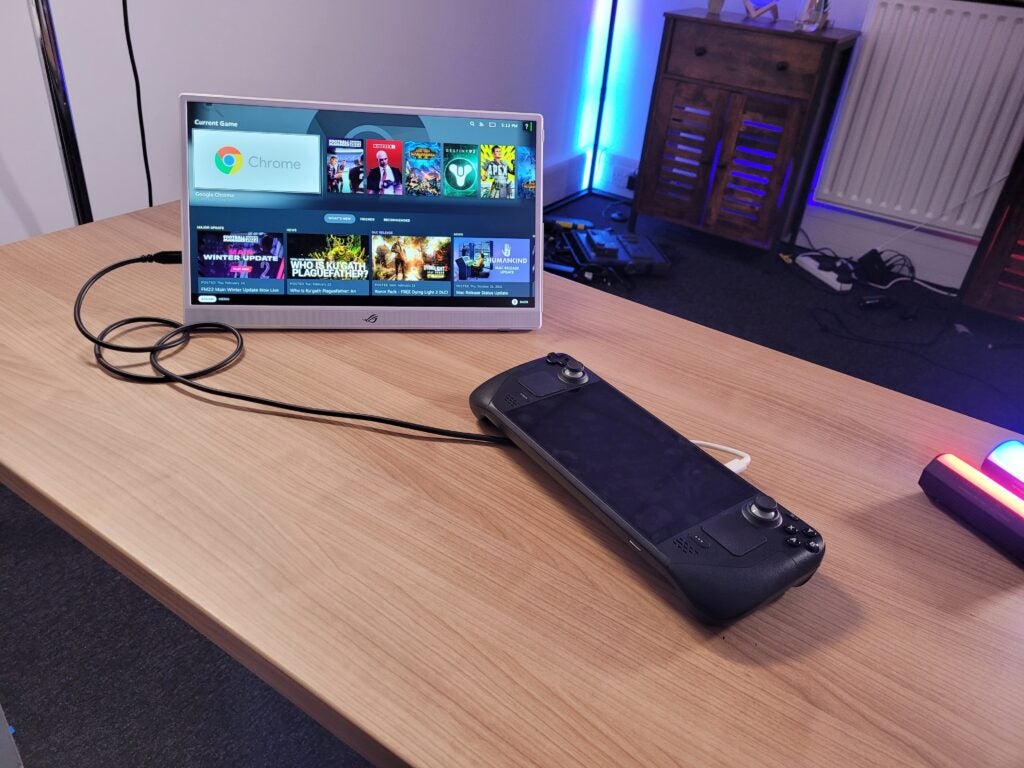
While both the Steam Deck and Switch have great screens, the OLED model of Nintendo’s portable comfortably offers the best display due to that vivid OLED panel based on my testing. Games have richer contrast thanks to the deeper blacks and generally are more immersive to play.
Performance and specs
The Steam Deck has taken a beating so far in this Steam Deck vs Nintendo Switch matchup, but that’s about to change now we’ve arrived at the performance section. The Switch is powered by a Nvidia Tegra processor, which hasn’t been updated for any model since the Switch first launched back in 2017.
Meanwhile, the Steam Deck flaunts a cutting-edge AMD chip, which features a Zen 2 CPU and RDNA 2 GPU. This makes the Steam Deck significantly more powerful than the Nintendo Switch.
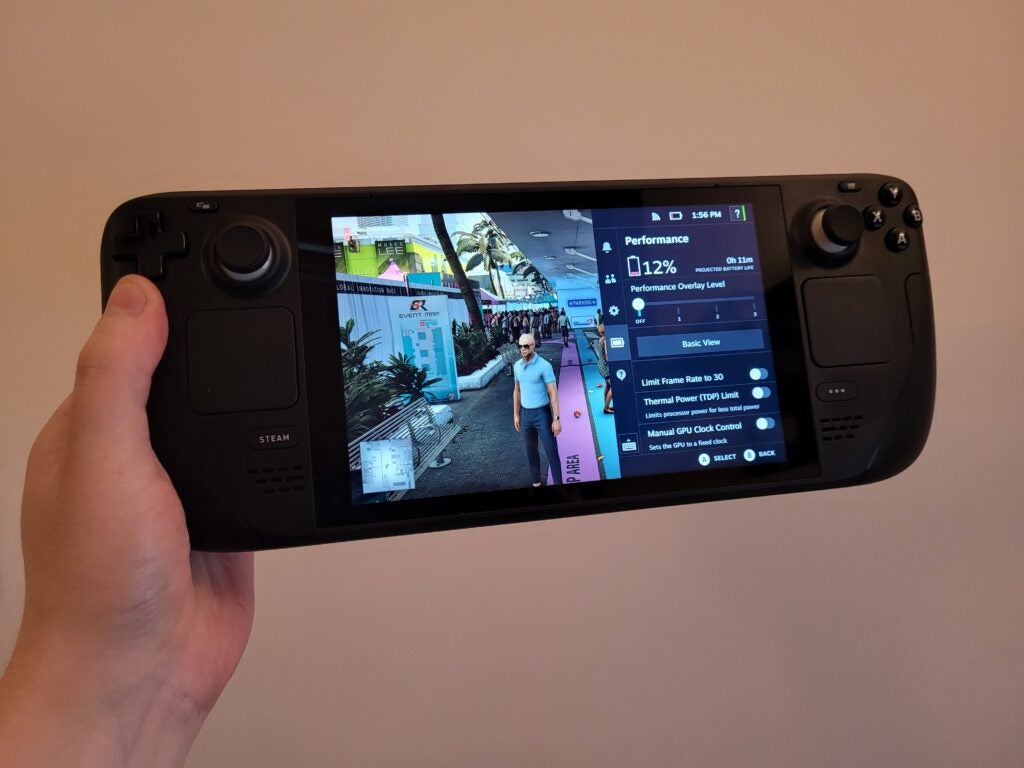
To emphasise the difference in performance power, during our tests the Steam Deck proved capable of running games such as Dying Light 2, Marvel’s Guardians of the Galaxy and Hitman 3 natively. The Nintendo Switch is incapable of playing these games natively, and instead relies on an internet connection to the cloud.
And while the Switch is capable of playing games such as The Witcher 3, it will look far better running on a Steam Deck, as you can hike up the graphics settings. The frame rate will also be higher, likely resulting in a smoother performance.
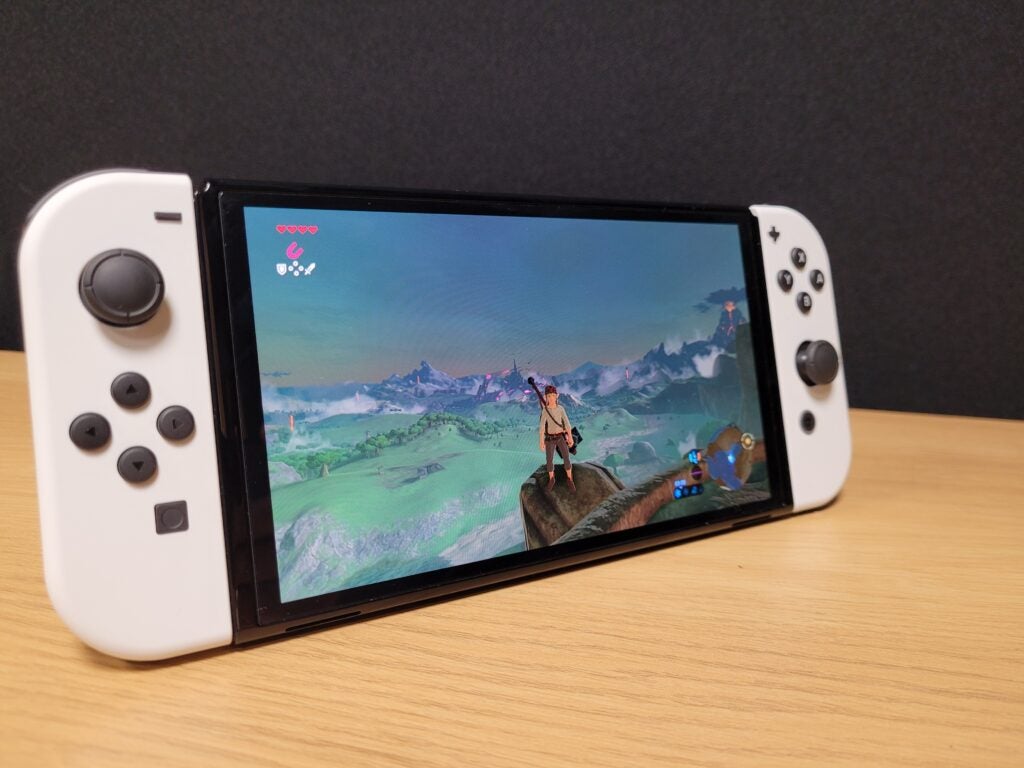
The standard Switch features 32GB of storage, while the Switch OLED packs a more generous 64GB hard drive. The Steam Deck comes in three flavours: 64GB, 256GB and 512GB. That seemingly gives Valve the advantage, but it’s not quite that straightforward. PC games generally (but not always) take up a lot more space than first-party Nintendo games. For example during our tests, Elden Ring requires 60GB of space on Steam Deck, while The Legend of Zelda: Breath of the Wild only needs 13.4 GB of memory.
Fortunately, both the Switch and the Steam Deck support MicroSD cards for storage expansion, so you can always add more room if you’re running out of space for your game collection.
Battery life
Valve claims the Steam Deck’s 40Whr battery can last between 2 to 8 hours of gameplay, depending on the game you’re playing. In comparison, Nintendo suggests the Switch can last between 4.5 and 9 hours of gameplay.
We’ve tested both portables and these figures seem accurate. But if you’re playing AAA games such as Horizon Zero Dawn on Steam Deck, you’re only going to manage to hit that 2-hour mark by scaling down the graphics settings and turning down the brightness.
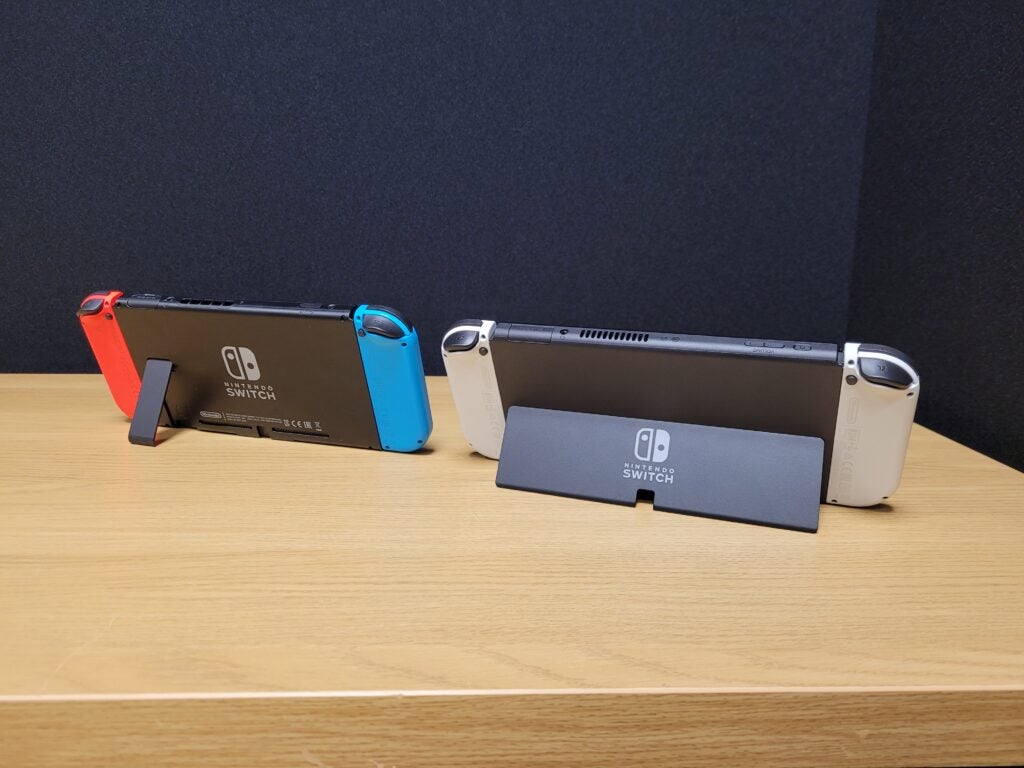
Since you can’t alter the graphics settings on a Switch, you should comfortably hit the 4.5-hour mark when playing the likes of Breath of the Wild. For AAA games – that’s more than double the stamina of the Steam Deck.
Due to its size and limited battery life, the Steam Deck is more suited to gaming at home or in a hotel room rather than killing time during a commute or flight.
Games
The Nintendo Switch has built up an impressive library of games over the past few years, with the likes of Breath of the Wild, Super Mario Odyssey, Super Smash Bros. Ultimate and Animal Crossing: New Horizons all receiving universal praise.

Unlike previous Nintendo consoles, the Switch also has great third-party support. There are a few surprising AAA games supported, including The Witcher 3, Doom Eternal and Civilization 6. However, the Switch is becoming increasingly more reliant on the cloud in order to play modern games, with examples such as Dying Light 2, Marvel’s Guardians of the Galaxy and Hitman 3.
But despite Nintendo’s best efforts, the Switch’s game library is dwarfed by the Steam Deck’s. Since the portable is actually a gaming PC, it has access to the same Steam store as any other computer.
That said, the Steam Deck doesn’t support every single Steam game. Many multiplayer games, such as Destiny 2, Apex Legends and Fortnite won’t run on the Deck since their anti-cheating software doesn’t play nice with Linux.

There are also a number of games that are optimised for play with a keyboard and mouse, and so aren’t ideal to play with a controller setup, with the Total War series being an obvious example.
But despite the Steam Deck being incapable of playing every single Steam game, it still has a ginormous game library that the Switch can’t compete with.
Software
Login to the Steam Deck, and the layout looks very similar to the Nintendo Switch. All of your most recently played games will be shown in a horizontal row, with big colourful icons.
But since the Steam Deck is actually a gaming PC running on SteamOS, it varies drastically to the Switch. Firstly, there are a lot more performance settings that you can fiddle with. You change the resolution and graphics settings during a game, and even limit the frame rate and power to maximise the battery life.
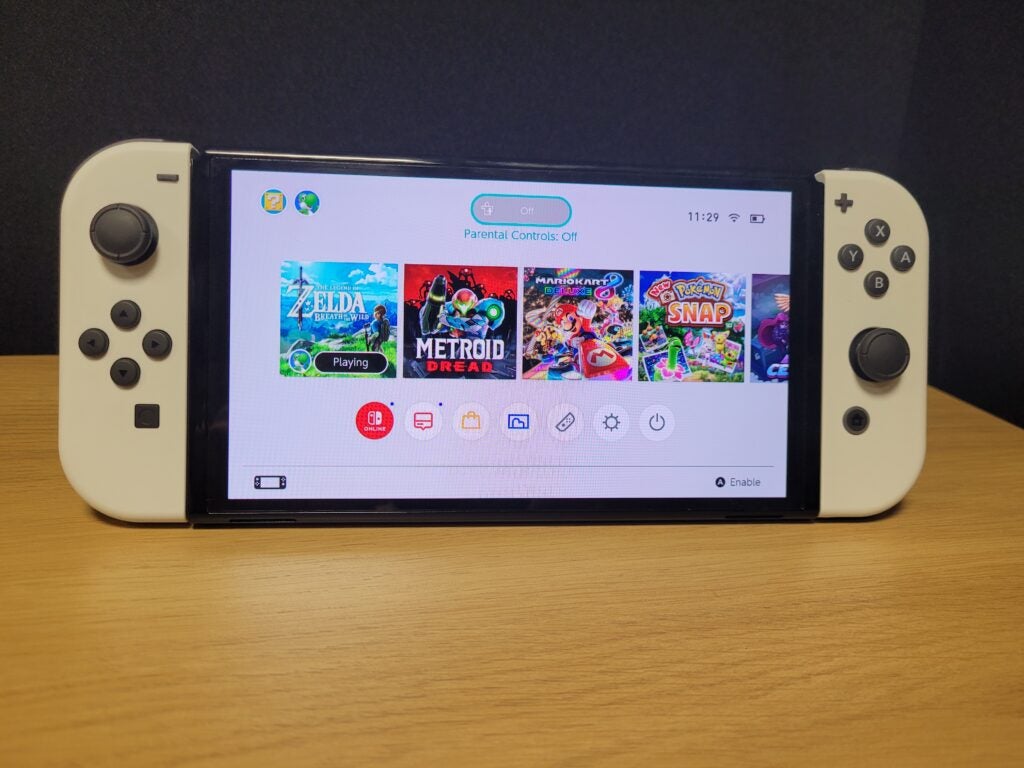
You can also activate features such as AMD’s FSR technology, which will use spatial upscaling to boost the frame-rate performance.
The Steam Deck also has a Linux desktop and a built-in Google Chrome browser, allowing you to browse the web and download supported apps. This means you could use the Steam Deck like a standard PC if you wanted, despite its clear optimisations for gaming.
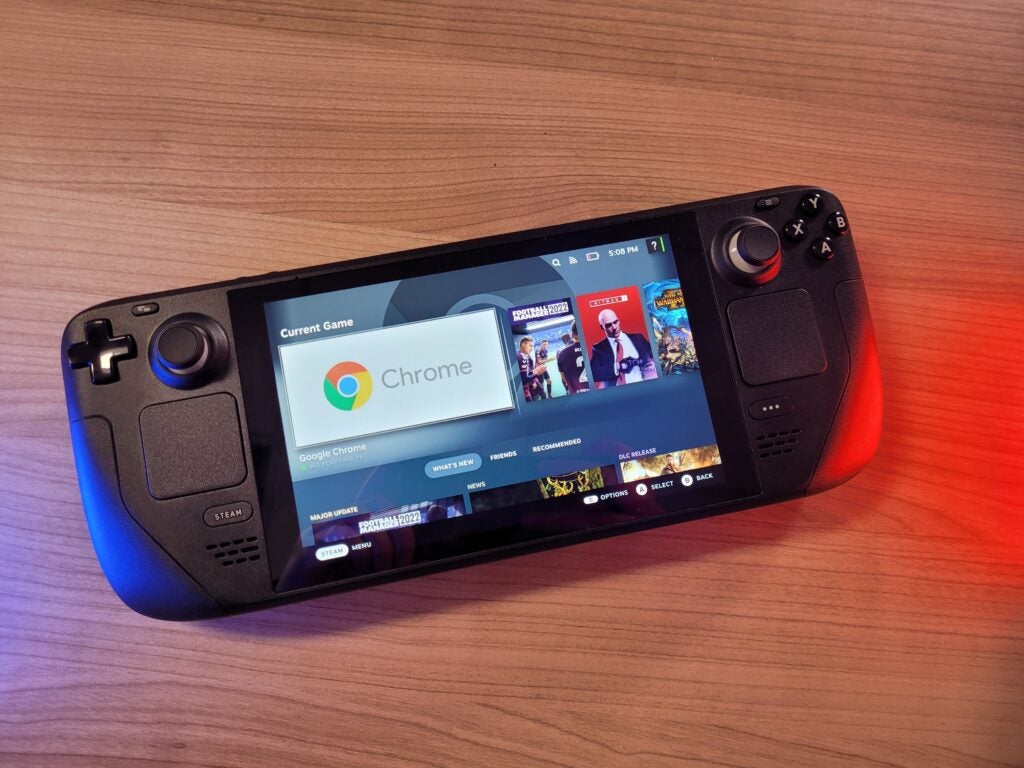
But despite the Steam Deck’s vast amount of options, it’s also got quite a few rough edges right now. Certain features won’t work like they’re intended to, and the Linux desktop will likely be difficult to those who are more accustomed to Windows.
The Switch is a very different beast altogether. It’s designed purely for gaming, and doesn’t give you the option of changing performance settings. This is arguably a good thing for casual gamers, as they don’t need to worry about fiddling with settings to get an optimum performance.
Final verdict
It’s impossible to declare a winner in this Steam Deck vs Nintendo Switch match-up, as the two gaming portables are so different that they serve very different needs.
The Nintendo Switch is the more portable of the two, making it easy to play games on the go, whether you’re on a plane or your commute to work. It’s simple and streamlined software isn’t intimidating, and there are plenty of games on offer to appeal to both children and adults.
The Steam Deck’s biggest strength is its performance power and vast game library. From 1998’s Half-Life to 2022’s Elden Ring there are plenty of games that are playable on the portable, even with major multiplayer games being incompatible.
If you already have a large Steam library, or simply wish to play modern AAA third-party games without reliance on the cloud, then the Steam Deck is arguably your best bet.
And if you prefer Nintendo games and indie titles, and want to make use of that gorgeous OLED screen, then the Switch should be considered instead.


